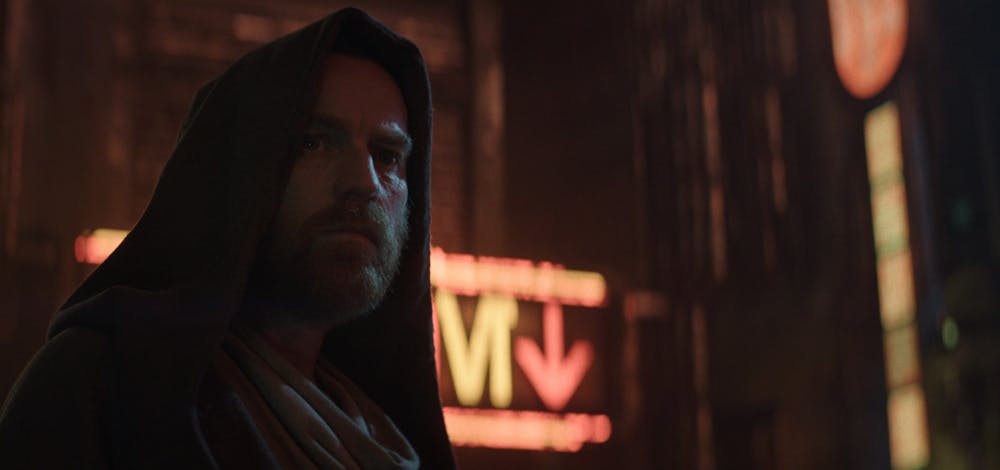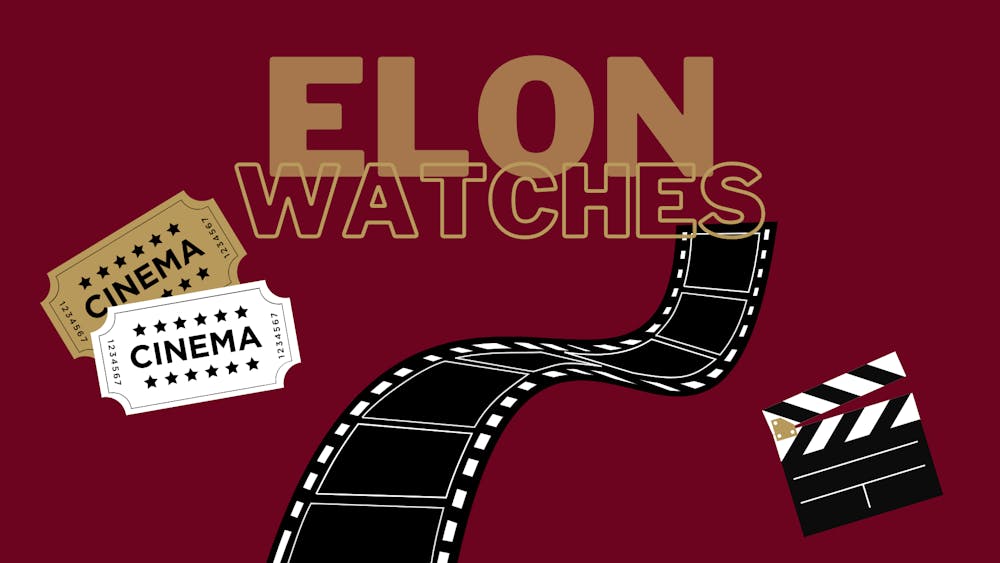In general, the idea of a show based around Obi-Wan is perplexing.
The story takes place between episodes III and IV of the Star Wars saga, so we’ve already seen both him in action and his fall. The animated shows “Star Wars: The Clone Wars” and “Star Wars: Rebels” have created an interesting new arc between him and the thought-to-be-dead Darth Maul, and while it is pretty good, it seems as if writers are grasping at straws with what to do with him.
“Obi-Wan Kenobi” proves the Star Wars franchise is running on empty, but there’s definitely still a little fuel left in the tank.
I would like to preface this review and say I didn’t really like the prequel trilogy. The acting is stilted, the pacing is all over the place and the story is one that didn’t need to be told — or at least could have been told better. Many of my friends disagree with me, but I think the prequels pale in comparison to the heart, effects and simplicity of the original trilogy. Since this series seemed like a direct follow-up to the prequels, I wasn’t super excited, but I was definitely curious.
In preparation, I rewatched every film in the prequel trilogy, as well as certain important episodes of the animated series “Star Wars: The Clone Wars,” to get a better idea of Anakin and Obi-Wan’s dynamic, as it isn’t explored very well in the films.
The show follows Obi-Wan Kenobi, played by Ewan McGregor, as he eludes the Empire after the events of the prequel trilogy. Princess Leia, played by Vivien Lyra Blair, is kidnapped, and Kenobi must come out of hiding to rescue her and bring her back to Alderaan. All the while, Kenobi is hunted by the Second Sister, played by Moses Ingram, and Darth Vader, played by Hayden Christensen.
One thing that’s for certain is that the quality of the show isn’t consistent overall. Some episodes feel like a mid-budget TV show, while others feel like a summer blockbuster. This isn’t really an issue, but it is noticeable and often takes you out of the story. For instance, the third episode features a lazer gate made out of plywood that can easily be walked around, while the fourth episode features a huge, flawlessly rendered imperial base.

“Obi-Wan Kenobi,” from Disney.
This doesn’t affect the per-episode story’s quality, however. The writing is surprisingly good, compared to the mediocre writing of recent major Star Wars projects and the prequel trilogy. The dialogue is genuine and full of heart, and the major events that surround the plot are executed well. This is interesting, as the basis of the overarching plot would ordinarily make me roll my eyes. The idea of having the conflict center around a young Princess Leia is the exact type of fan service I hate, and while I still hope the Star Wars franchise will wean off of this, the tasteful way in which it is executed made it a bearable vehicle to the meatier moments in the story. The meatier moments are character-driven, which I feel is something that has taken a backseat to action and fan service in recent Star Wars projects.
The performances of all actors, both returning and new, are top-notch here. McGregor is excellent as always and embodies an older Obi-Wan very well. Christensen, who plays both Anakin Skywalker and Darth Vader, was surprisingly good. Unlike in the prequel trilogy, his performance was subtle at times and utterly heart-wrenching at others. It seems that he has grown as an actor, and I can’t wait to see what he does next. Ingram does well as a Star Wars newcomer, though she’s a bit underwhelming as a villain because she has this youthful air about her. Lyra Blair’s performance as Princess Leia isn’t bad, but isn’t exactly stellar either. She does what she can in service of the story, but there’s definitely room for improvement.
There are a few more drawbacks as far as production goes. First, the cinematography is often quite messy, which isn’t something I was expecting from a Star Wars project. The show has this habit of trying to make certain scenes feel frantic by violently shaking the camera during action scenes. This looks amateurish at points, and at others, it’s downright hard to watch. The well-choreographed action is hard to follow when this effect is used, which is a shame.
The score, which I expected to be fantastic since John Williams returned for a few tracks, was mediocre. “Forgettable” is a word that keeps coming to mind. There are several motifs that reappear now and then, but for the life of me I can’t remember a single one of them. Everything apart from that feels like someone trying to recreate the feeling of Star Wars music, rather than create a score that’s iconic on its own. It’s not distracting, but it is disappointing, especially because Natalie Holt, the composer of the music in the show “Loki” — which I thought had an exceptional score — is the main composer for “Kenobi.”
Despite these technical critiques, I have one huge, but incredibly specific, nitpick about the show as a concept.
Creating prequels to the original Star Wars trilogy was justified, as in the original series, you can sense a rich history within that world, and creating a sequel trilogy just seems like a necessary evil — but creating a series about major characters who already have an established beginning and end is strange and limiting. While there are plenty of interesting character moments to be had, it’s hard to find meaning or tension when I already know how it ends. We know there is no way any of the main characters can die, as that would stop the original trilogy from happening. It takes away a lot of the stakes, and while I generally care about what’s happening, something is missing.
All that aside, “Obi-Wan Kenobi” is a step in the right direction for how the Star Wars narrative is told. It’s a character-driven story that doesn’t necessarily surprise, but it tastefully creates a well-crafted story out of previously established characters. I wouldn’t go out of my way to watch it, but if you’re already into the franchise, I would recommend checking it out.
Final Score: 7/10


